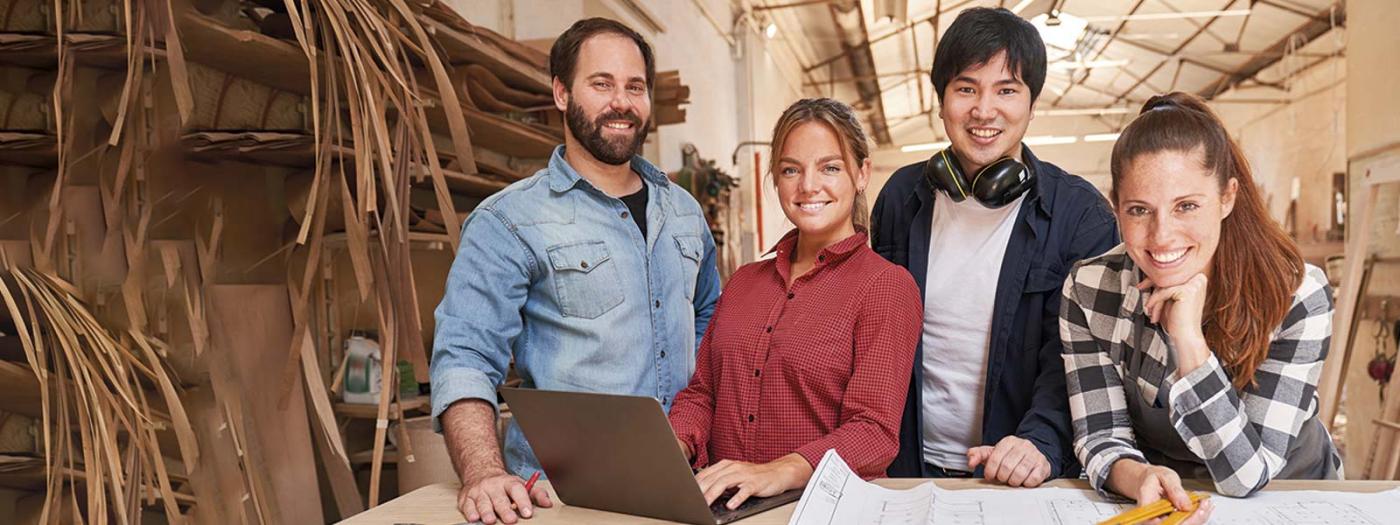Degree in Architecture Studies or Fundamentals of Architecture.
The objective of the structures course within the habilitating master's program is for the student to achieve the following competencies:
1. Selection of the most suitable structural typology for their project, justifying its coherence from the architectural, structural, and sustainability perspectives.
2. Ability to perform the basic predimensioning of the typical structural elements that make up their project.
3. Coherence and integration of the structural elements with the other elements of the building.
4. Verification of the characteristic structural sections of the project from both the stress and deformation perspectives.
5. Resolution of the basic constructive details of the structure of their project and drawing the necessary structural plans to describe it.
COMPETENCIES
Basic and general:
CG2 - Ability to create architectural projects that satisfy both aesthetic and technical demands, as well as user requirements, respecting the limits imposed by budgetary factors and construction regulations.
IS1 - Able to analyze and synthesize conceptual frameworks, generating new knowledge.
IS9 - Able to solve architectural problems.
IS10 - Able to make decisions (in projects, construction systems, organization, etc.).
CB6 - Possess and understand knowledge that provides a foundation or opportunity to be original in the development and/or application of ideas, often in a research context.
CB7 - Students should know how to apply the knowledge they have acquired and their problem-solving skills in new or unfamiliar environments within broader (or multidisciplinary) contexts related to their field of study.
CB8 - Students should be able to integrate knowledge and face the complexity of making judgments based on information that, while incomplete or limited, includes reflections on the social and ethical responsibilities related to the application of their knowledge and judgments.
CB9 - Students should know how to communicate their conclusions and the knowledge and reasoning behind them to specialized and non-specialized audiences in a clear and unambiguous way.
CB10 - Students should have the learning skills that enable them to continue studying in a manner that will be largely self-directed or autonomous.
Transversal:
IT2 - Able to work in an interdisciplinary team.
Specific:
A15 - T-STRUCTURE PROJECT. Aptitude or ability to conceive, design, calculate, integrate structural solutions into buildings and urban complexes, and execute them, as well as provide technical advice on these aspects.
A2 - P-EXECUTIVE PROJECTS. Aptitude or ability to prepare comprehensive execution projects for buildings and urban spaces with a sufficient level of detail for their complete implementation, including service and installation equipment.
A3 - P-CONSTRUCTION MANAGEMENT. Aptitude or ability to manage building and urbanization works by developing projects, setting them out on-site, applying appropriate construction procedures, and coordinating trades and industries.
The course will be taught by combining lectures, seminars, practical workshop classes, and computer lab sessions where students will calculate a representative part of their structure. The following topics will be covered:
1. Structural types and optimization of the structure based on its geometry. Balance of spans, types of connections, influence of cantilevers, etc.
2. Stabilization of structures. Triangulations, retaining walls, rigid frames, rigid diaphragms, unbalanced thrusts, knot typology.
3. Predimensioning of structural elements: Cantilever of different types of roofs, trusses, dimensions of supports, walls, foundations, etc.
4. Verification of the predimensioned elements through computer calculation. Establishment of the calculation model, its boundary conditions, the loads to be applied, and critical analysis of the obtained results.
5. Representation of structural elements and systems according to the chosen typology. Plans for foundation layouts, structural plans, typical details, and justification of the results from the calculations performed using computer tools.
The course aims for students to take charge of their own learning. In this sense, the teacher's role is focused on guiding students, identifying their needs, and promoting the development of their critical, creative, and reflective thinking through questions directly related to their projects.
Students are actively encouraged to research structural knowledge topics directly related to their specific issues and the particular problems of their building's structural typology. They are required to participate actively and propose solutions for subsequent evaluation and technical discussion.
This process takes place in an individual and collaborative work context. In line with this pedagogical framework, the evaluation (see the course grading section) is fundamentally formative, linked to continuous feedback between the questions raised by the student and the proposed solutions, duly verified from a technical knowledge perspective.
10% Class participation
10% Presentations
10% Assignments completed at home or in class
70% Projects
The student is considered to have met the course objectives when they have been able to develop their structural project in line with the objectives outlined in section 1, with the course grade determined according to the following rubric:
Class participation: Attendance and participation in classes and workshops - 10%
Presentations: Representation and presentation of the structural project - 10%
Assignments completed at home or in class: Preliminary sizing and verification of structural elements - 10%
Projects: Coherence of the developed structural solution - 70%
- TORROJA MIRET, Eduardo. Razon y ser de los tipos estructurales. Consejo superior de investigaciones científicas CSIC: Madrid, 1998.
- TIMOSSHENKO Y YOUNG. Teoria de las estructuras. URMO s.a de ediciones: Bilbao, 1988.
- ARROYO PORTERO, Juan Carlos. Números gordos en el proyecto de estructuras. Cinter divulgación técnica: España, 2002.
- CAMPANYÀ CASTELLTORT, Carles. Manual de Predimensionado. LaSalle arq: Barcelona 2023.
- JIMENEZ MONTOYA, Pedro. Hormigón armado. Editorial Gustavo Gili: Barcelona, 2000.
- ARGÜELLES ALVAREZ, Ramón. Cálculo de estructuras. Rigorma Grafic S.L: Madrid 1999.
- PACINI, Julio Cesar. Estructuras de madera. Editorial Nobuko: Argentina 2019.
- GUSTAFSSON, Anders. The CLT Handbook. RISE Research Institute Sweden: Skelleftea, May 2019.
- Código Estructural. Ministerio de vivienda y agenda urbana: Madrid, 2021.
- Código Técnico de la edificación.
- CTE DB-SE. CTE DB-SE AE. CTE DB-SE C. CTE DB-SE F. CTE DB-SE M. CTE DB-SE A.CTMinisterio de la presidencia: Madrid, 2024.
